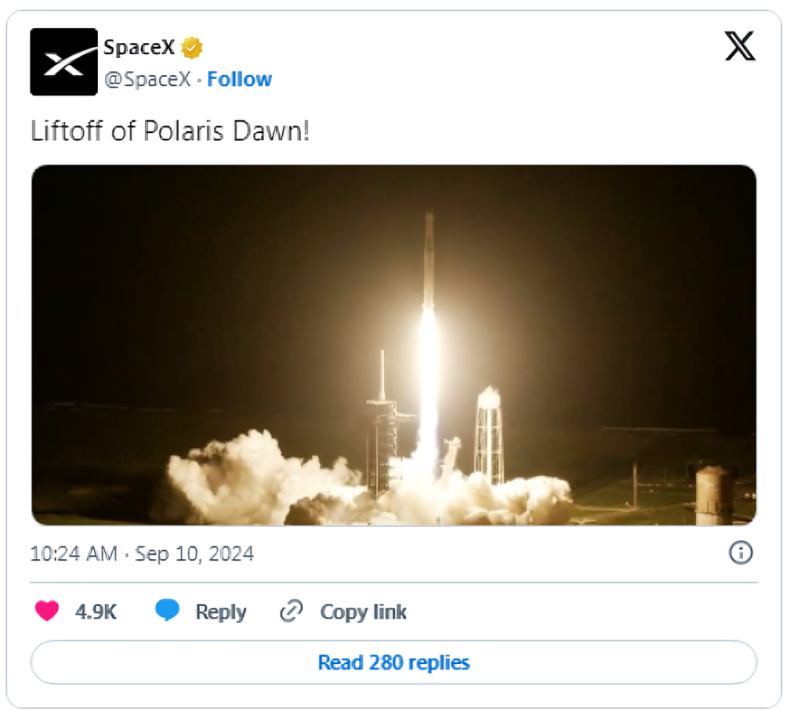Pioneering the Cosmos: SpaceX's Groundbreaking Private Mission Features Civilian Spacewalk
In a groundbreaking achievement for private space exploration, SpaceX successfully launched its Polaris Dawn mission early Tuesday morning. The mission, which departed from NASA’s Kennedy Space Center at 5:24 a.m. ET, marks a significant milestone as it aims to execute the first spacewalk by an entirely civilian crew.
The Polaris Dawn mission is set to reach a record-setting altitude of 870 miles above Earth, surpassing the height achieved during the final Apollo moon mission in 1972. This altitude is more than three times higher than the International Space Station (ISS). During their five-day mission, the crew will test new spacesuits and technologies that are expected to facilitate future long-duration missions to the Moon and Mars.
Originally slated for late August, the launch faced delays due to a helium leak at the launch pad and adverse weather conditions off the Florida coast, where the SpaceX capsule is scheduled to return.

The mission's four-member crew includes billionaire entrepreneur Jared Isaacman, the founder and CEO of Shift4 Payments; retired Air Force Lt. Col. Scott “Kidd” Poteet; and SpaceX engineers Sarah Gillis and Anna Menon. Isaacman, who funded and participated in SpaceX’s first all-civilian orbit mission in 2021, is spearheading the Polaris Dawn initiative in collaboration with SpaceX.
On the third day of the mission, Isaacman and Gillis are expected to perform the historic spacewalk. Due to the Crew Dragon spacecraft’s lack of a pressurized airlock, the entire capsule will be depressurized, exposing the crew to space conditions. This necessitates the use of new spacesuit designs, which will be rigorously tested during the spacewalk.
Should the mission proceed as planned, it will set a new precedent in space exploration, as previously only astronauts from governmental space agencies have conducted spacewalks for space station construction, satellite repairs, and scientific research.
The Crew Dragon capsule will also traverse the Van Allen radiation belts, providing valuable data on space radiation’s effects on both the spacecraft and its occupants. This information is crucial for planning future missions to the Moon and Mars, which will require astronauts to pass through these radiation zones.
Jared Isaacman’s Polaris program, which aims to advance space exploration technology and maneuvers, marks the first of three planned spaceflights funded by him. The cost and objectives of the subsequent missions have not been disclosed.
Lire aussi
Latest News
- 18:20 Partido Popular strengthens internal structure ahead of congress
- 17:50 Spain strengthens peacekeeping efforts in Lebanon with new military deployment
- 17:20 Spain's call for action on humanitarian crisis in Gaza
- 16:45 Centrale Automobile Chérifienne launches third edition of Village Auto
- 16:15 Morocco's foreign minister meets Iraqi president ahead of Arab summit
- 15:45 HM King Mohammed VI extends warm wishes to Norway's royal family on national day
- 15:10 HM King Mohammed VI urges revival of ceasefire negotiations amid ongoing Gaza conflict

